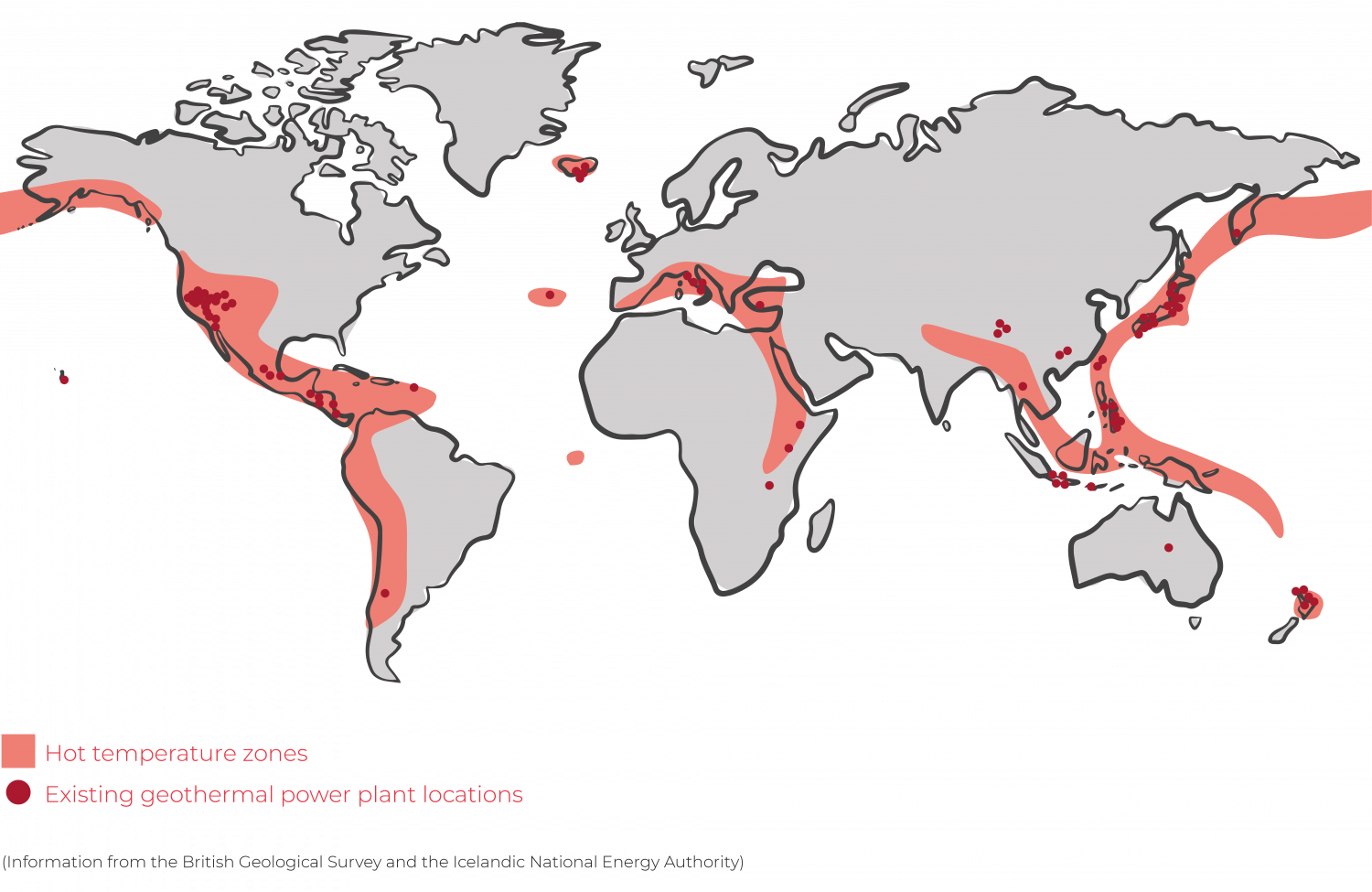Geothermal energy is the heat in the rock beneath our feet. In general, the deeper you go, the hotter it gets, but in some places with tectonic plate movements or active volcanoes, like California or Iceland, the heat is closer to the surface.
There, geothermal heat and power stations are routine and are cost competitive with gas or wind power. Wells drilled into the rock intersect with hydrothermal reservoirs, and the superheated water brought to the surface runs turbines to create electricity, and is used for heating or industry.
In other (non-volcanic and non-tectonic) locations, improvements and falling costs in drilling technology, and lower temperature electricity generation, now mean that Engineered Geothermal Systems can be used to generate power.

By the end of 2021, 15.85 GW of geothermal electricity capacity had been installed across 27 countries worldwide. The United States has the greatest cumulative nameplate geothermal power capacity installed – but is still using less than 1% of its total geothermal resources. Kenya is the country producing the largest share of its electricity from geothermal (46%) while the Philippines, Chile and Turkey were the countries adding the most capacity during 2021.
In Europe, Italy and Turkey are the main producers of geothermal electricity, but Germany, France, Portugal, Austria, Hungary and Croatia also generate geothermal electricity, and geothermal CHP plants are in the development and construction stages in Cornwall in the UK.
And a huge increase in geothermal heating is forecast in Europe over the coming years, as governments seek alternatives to expensive gas-fired heating and to meet exacting carbon targets. Independent energy research and business intelligence company Rystad has estimated that total installed capacity will surpass 6.2 gigawatt thermal (GWt) in 2030, a 58% increase from the 2022 total of 3.9 GWt, with a corresponding investment of an estimated $7.4 billion. And that’s not including any systems using heat pumps.
Geothermal heat capacity in Germany has doubled from 200 megawatt thermal (MWt) in 2012 to 400 MWt in 2022. By 2030, capacity is set to double again and approach 850 MWt, with a spend of more than $1.5 billion on geothermal heat projects expected by 2030. Meanwhile the Netherlands plans to have more than 1 GWt capacity by the end of the decade.









